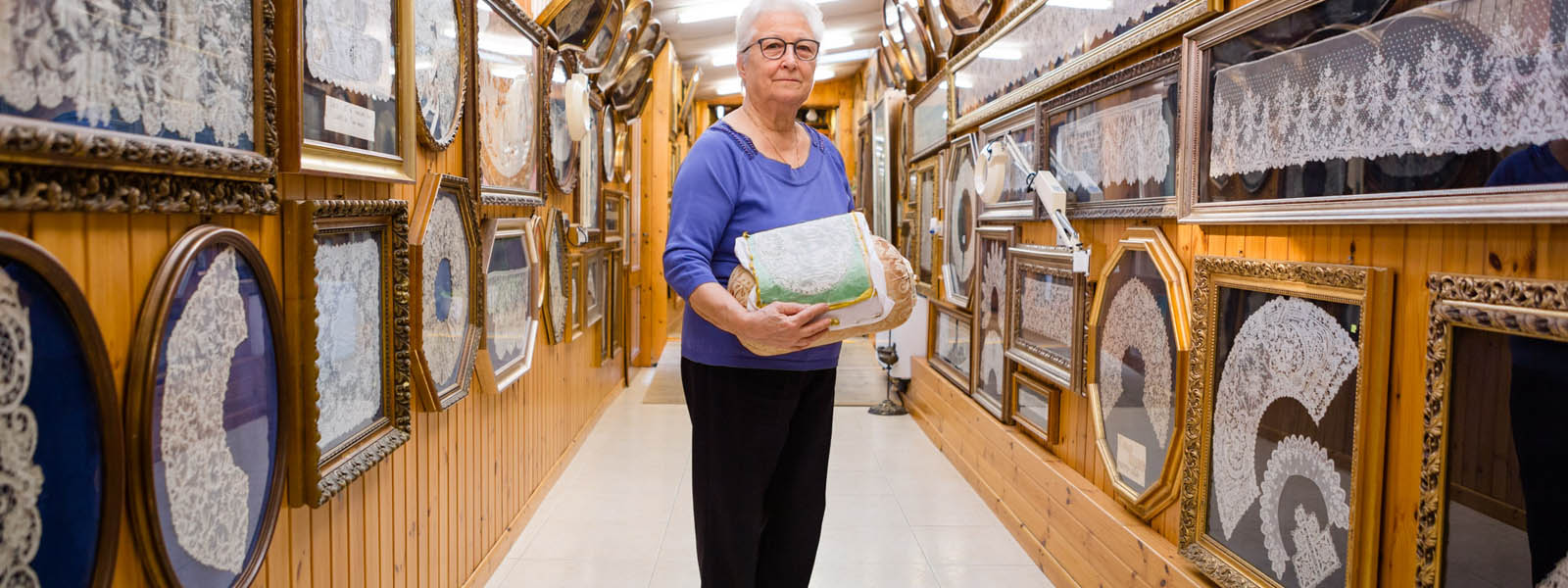WHAT’S IT LIKE TO LIVE ON SUCH A UNIQUE ISLAND?
I like living here, I would never live anywhere else. It’s easy to live here, and it’s a perfect size. Here, you’re not an anonymous face, we all know each other and for better or worse, we’re like a family. It’s not like living in a big city, where nobody knows you. I love living here.HOW DID MERLETTO LACE MAKING IN BURANO START?
They say that during the time of the Venetian republic there was a lot of poverty, and in order to make some money when the winter arrived and the fisherman could not go out on their boats.HOW IS MERLETTO DONE?
Our merletto is one big knot, we create a weave and every point is a knot. A pellestrina invece fanno il fusello, che sarebbe un intreccio, una tessitura, è completamente differente. Invece a Chioggia facevano il Filè, come la rete dei pescatori, la mettevano su un telaio e facevano tutti i vari disegni, molto differente anche quello dal nostro. La tecnica del merletto di Burano è stata poi esportata, con il tempo, in gran parte d’Europa.THIS IS AN HISTORIC MERLETTO WORKSHOP. COULD YOU TELL US ITS STORY?
At first they sold fabric and clothes, then we began with merletto about 50 years ago, we were one of the first stores to sell merletto on Burano. Inizialmente si vendevano le stoffe e confezioni, poi abbiamo cominciato con il merletto, ormai 50 anni fa, siamo stati uno dei primi negozi che si è messo a vendere il merletto a Burano.HOW DID YOU LEARN THE ART OF MERLETTO?
Once there was a lacemaking school on Burano, all the rooms of the current Merletto Museum, once it was full of girls, unmarried women, because once they were married they had to take care of their families. They brought their work home in any case, it was the only resource that young women had here on the island to make a bit of money and help their families.HOW DOES MERLETTO SCHOOL WORK?
We had teachers from Burano who taught us to make lace, if you didn’t do it well you had to start all over, until it was perfect. In fact, when you were done with lacemaking school, you worked well. I went to lacemaking school to learn embroidery, but then I got awful headaches and started to do merletto instead, for three years. Then I stopped because I didn’t like it that much. But then after a few years I took it up again because I liked it.AND AFTER MERLETTO SCHOOL?
I helped my brother who had a food market here in Burano. Then, I went to Mestre for a year and I went to school. Then I went to England when I was twenty-one. I had broken up with my boyfriend and decided to go to England and lived with the family of friends who came to Burano often, I took the ball into my own court and asked if I could go with them. I stayed for three months, they took me everywhere, and to thank them, I gave them a doily I had made. Then I went back to Burano, finished school, made up with my boyfriend, and we got married and started making lace.


